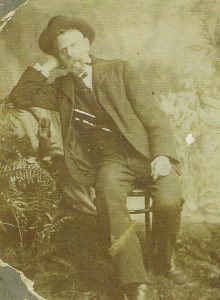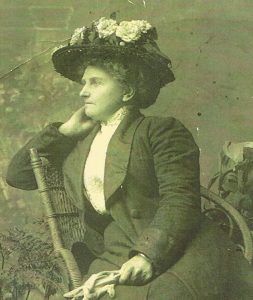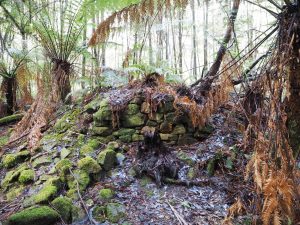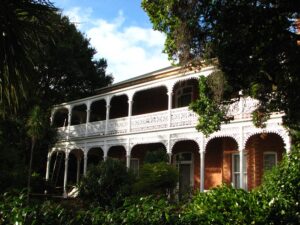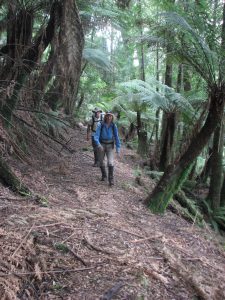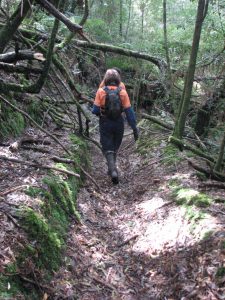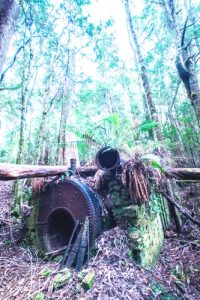In 1891 the Godkin Silver Mining Company (GSM Co) spent about £7000 building a horse-drawn tramway to service its mine before the value of the property was even established. Its mine manager, Arthur Richard (AR) Browne, was more interested in installing machinery at the property 13 miles (21 km) south-west of Waratah. He wanted the Godkin to not only control the mining field’s transport but to be its custom smelter.[i] The GSM Co’s early half yearly reports are a litany of grand installation plans fed by Browne’s delusional ore values: £10,000 worth of ore were said to be on the claim in September 1890; £70,000-£80,000 worth in March 1891.[ii]
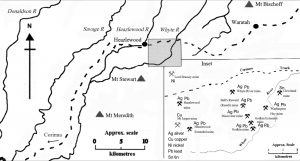
However, the September 1891 report, tabled when Browne was on sick leave, painted a sobering picture of the mine. Only 27 tons of silver and lead ore from the southern section had been sold, for a profit of £218—not much of a return on the £7000 tramway.[iii] Directors were nervous.[iv] Notably, no banquet was called to celebrate completion of the second, 4-km-long stage of the Godkin Tramway to the Arthur River, which was tipped to occur in October 1891. No announcement of the achievement was ever made. Since the tramway never reached Waratah, it is safe to say that none of the construction costs were defrayed by hauling freight for other mining companies.
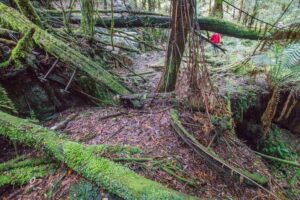
Browne never returned to the Godkin, reportedly resigning in protest at directorial preference for tramway construction. His preference remained not proving the mine, but smelter building.[v] His last hurrah, delivered vicariously by Chairman of Directors TC Smart at the February 1892 half yearly meeting, was to compare the Godkin with Broken Hill mines and to continue to press for a smelter. Smart kept up the rhetoric, declaring in September 1892 that no Broken Hill mine had produced such rich ore at such a shallow level.[vi] When Browne returned to Tasmania in January 1893, it was as the Burnie agent for the Queensland Smelting Company, which envisaged buying ores from the new Tasmanian silver fields at the 13-Mile and Zeehan.[vii] Browne must have died an optimist in 1900 when, at the age of only 34, after stints at mines in Western Australia and British Columbia, he succumbed to asphyxia at the London home of his father, Lord Richard Browne.[viii]

Despite securing another Broken Hill mining manager, Nathaniel Hawke, the GSM Co was already doomed.[ix] It had spent about £26,000 for a return of less than £300 when in 1892 government geologist Alexander Montgomery reported that it was no closer to success than when it started, having no payable ore on hand and needing to conduct deep sinking to prove its claim.
Montgomery also offered a cheaper alternative to deep sinking, but it was one which could never be definitive: driving a 1200-metre-long drainage tunnel from the Whyte River through both southern and northern leases to meet the engine shaft in the northern lease. While still working the upper, oxidised zone, this would test the entire property at a deeper level as well as drain it. The estimated cost of £2500–£3000 was well beyond the means of the GSM Co during tough economic times, and it succumbed to creditors in May 1894.[x] The surveyed township reserve of Stafford near the South Godkin site was never needed.
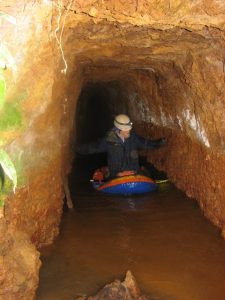
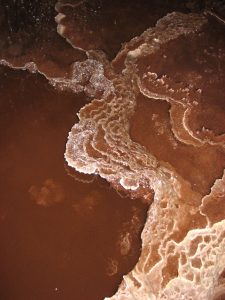
The 13-Mile field today
The subsequent history of the 13-Mile mines is a typical one of de-evolution, both financial and technological. In the case of the Godkin, under-capitalised companies forced to revert to basic technology sought to exploit a lode that a heavily capitalised company had failed to even prove. The Victorian Magnet Company, which in 1912 completed the 1200-metre-long drainage tunnel, worked the North Godkin shaft using not a steam engine but a horse whim for motive power.[xi] By 1923 this company still used the Godkin Tramway to access the mine from the Corinna Road at Whyte River, but had converted it into a sledge track, the wooden rails having been torn up decades before in order to help build the nearby Whyte River Hotel.[xii] None of the 13-Mile mines was tested at depth until Electrolytic Zinc drilled the North Godkin site, Bell’s Reward, Discoverer and Godkin Extended in 1949—and the South Godkin Mine site remains undrilled to this day.[xiii] The likely presence of zinc in the Godkin’s pre-1917 finger dumps (that is, mullock that pre-dates the separation of zinc in Tasmania by the electrolytic process) and the possible presence of tin threaten to disturb what can now be seen as a fine historical mining interpretation site.
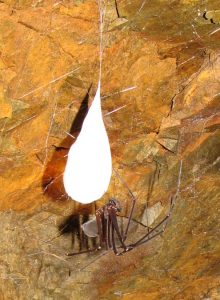
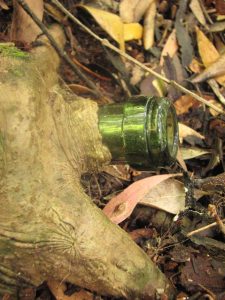
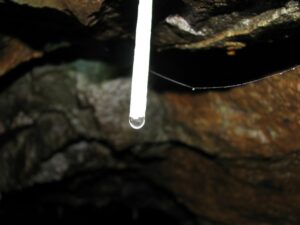
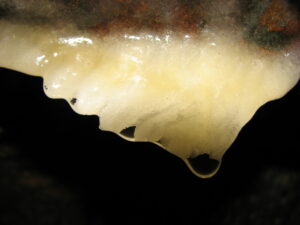
Aside from pilfering by visitors, the 13-Mile field has remained largely undisturbed for almost a century. With so many artifacts still in place and with more than 50 adits, shafts and other workings, this is one Tasmania’s most impressive mining heritage sites. The expenditure demonstrated by the Godkin and Godkin Extended Tramways (1889–92), Cornish boiler (1891), blacksmith’s shop, ship’s tank, steam pumps, windlass, flywheel and head frame tell the tale of a fanatical response to the Broken Hill silver boom of 1888, while the horse whim at the North Godkin shaft recalls the technological reversal of later years. Similarly, the main tramway, with its in places corduroyed formation, bridge ruins, discarded iron wheels, axles, sledge artifacts and branch tramways to other mines, demonstrates not only the GSM Co’s efforts to capitalise on the mining field’s transport needs, but the de-evolution of the Godkin.[xiv]
[i] ‘Meeting of the company’, Mercury, 8 January 1891, p.3.
[ii] ‘Meeting: Godkin SM Co’, Mercury, 26 September 1890, p.3; ‘Godkin SM Co’, Mercury, 26 March 1891, p. 3.
[iii] The company would sell only seven more tons of ore, to Kennedy and Sons and the Clyde Works in Sydney, in 1892.
[iv] ‘Godkin Silver Mining Co’, Mercury, 29 September 1891, p.4.
[v] ‘The Godkin Mine’, Launceston Examiner, 5 November 1891, p.4.
[vi] ‘Meetings: Godkin SM Co’, Mercury, 1 October 1892, supplement, p.1.
[vii] GVS Dunn to JW Norton Smith, Van Diemen’s Land Company, 31 May and 10 June 1892, VDL22/1/23; Arthur R Browne to JW Norton Smith, Van Diemen’s Land Company, 24 January 1893, VDL 22/1/23 (TAHO).
[viii] ‘Queenstown notes’, Zeehan and Dundas Herald, 12 May 1900, p.4; ‘Sudden death of Lord Richard Browne’s son at Reigate’, Sussex Agricultural Express, 28 April 1900, p.10.
[ix] Little is known of Hawke’s performance, but his ability to defend himself with a gun prompted a conviction for assaulting the mine’s dismissed engineer in August 1892 (editorial, Zeehan and Dundas Herald, 12 August 1892, p.2).
[x] Alexander Montgomery, Report on the Godkin Silver Mine, Geological Surveyor’s Office, Launceston, 1892, p.3; advert, Launceston Examiner, 14 May 1894, p.2.
[xi] Secretary of Mines Annual report for 1912, 1913, p.37.
[xii] Nye, The silver-lead deposits of the Waratah district, p.118.
[xiii] DI Groves, The geology of the Heazlewood–Godkin area, Department of Mines, Hobart, 1966, pp.37–39; Allegiance Mining, EL 14/2001 Heazlewood Area, Tasmania: partial relinquishment report, 2002, p.20.
[xiv] See also Parry Kostoglou, An archaeological survey of the historic Godkin Silver Lead Mine, Archaeological Survey Report, 1999/03, Mineral Resources Tasmania, Hobart, 1999.
